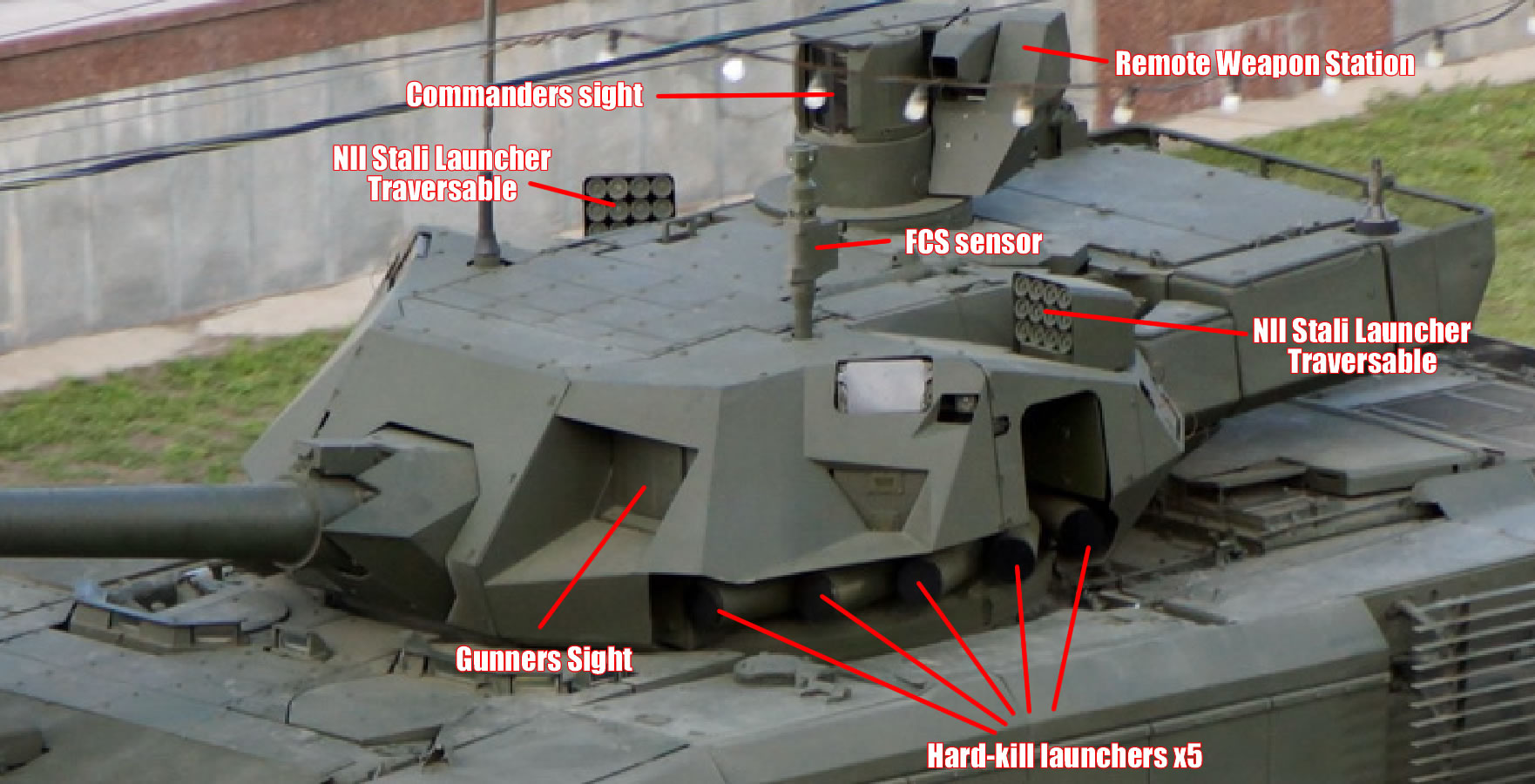Tan-tara,tan-tara,.Armata what?!
 But seriously,the DRDO should understand,if it did not earlier,that the IA has for decades got addicted to a 3-man crewed MBT which weighs far less than an Arjun.
But seriously,the DRDO should understand,if it did not earlier,that the IA has for decades got addicted to a 3-man crewed MBT which weighs far less than an Arjun. The IA's entire armoured doctrine and logistic network has been built up for this requirement to support around 3000+ T-72s (upgraded) and T-90s. I would suggest that when the Arjun was first conceived,way back in the '80s, the DRDO took as its example the Leopard,which was then considered as the "best-from-the-west".The Arjun's turret shape can certainly see the influence of the Leopard.Slab sided hull with no sloped glacis. I remember a detailed Frontline article on it way back in the late '80s,early '90s when it was rolled out. A 4-crew MBT will definitely weigh more as the turret has to be much larger for the extra crew member. Now,in the latest evolution of the MBT,the Armata has the crew in the hull itself,with an entirely automated turret,not just the auto-loader on its T-series (T-72s and T-90s)s.
WE must also look at the doctrine behind the design of the Leopard and the Merkava. The Merkava places the engine first to protect the crew,expecting armoured frontal assaults from the enemy,where in defensive positions,it would be able to defeat incoming shells .In Lebanon,the Hiz were able to knock out so many Merkavas because they were attacked from the sides and rear,where the armour was less tk. and vulnerable to tandem warhead RPGs. The German Leopard has been designed to expect a massive Russian molniya/lightning strike across the borders,where the Soviet tactic was to use its heavier armoured MBTs like T-80s ,followed by large numbers of T-72s,etc., rushing through the gaps created .
Now according to sev. reports,T-90s manufactured in Russia are cheaper than those produced at Avadi. Open source info suggests that the costs are: T-90M$ @ 4.5M+,vs Arjun MK-1 @ $ 8.3M+.This is a huge difference. It means that the IA would approx. get 2 T-90s for the price of 1 Arjun. Even if a T-90 with all the bells and whistles costs around $5M,it would be much cheaper than an Arjun MK-2 which would cost ,being heavier and with more eqpt. at least $9-19M a pop. This would be a v.strong argument to be used by the IA with the MOD/GOI for continuing purchasing/building T-90s instead of Arjun MK-2s. What about the future?
Now here is an astonishing fig. Take it or leave it.The official/Wiki cost of an Armata is supposed to be only $3.7M! .Earlier estimates of it being about $6M+ were found excessive ,once the tank goes into mass production. By 2020 the Russian Army had planned to acquire around 2000" Armatas,v.unlikely,a more accurate fig would be around 500+ if production is streamlined.Some 3-D printing of components is being done says the OEM.100 tanks will be recd. by 2017 and batches of 100-150 will be produced. What the export price will be is anybody's guess,but given the Russian desire to export the tank to those nations who've been operating its MBTs,plus a couple of Gulfies as well,the MBT could be produced in v.large numbers keeping costs down. Being only around 50+T,it would also weigh approx 10T less than an Arjun MK-1. I would guesstimate that it would cost around $%M+ for export.
Watch this space.
Some Wiki xcpts:
In all, India plans to have 1,640 T-90 tanks in service by 2018–2020.A ₹10,000 crore (US$1.5 billion) purchase of 354 new T-90MS tanks for six tank regiments for the China border has been approved[29] which would take the total number of T-90 tanks in the Indian Army's inventory to 2011 and with a total of nearly 4500 tanks (T-90 and variants, T-72 and Arjun MBT) in active service, the world's third largest operator of tanks.
India plans to have 21 tank regiments of T-90s by 2020, with 45 combat tanks and 17 training and replacement tanks per regiment, for 62 total each
On 17 September 2013, India's Defence Ministry approved the production of 235 T-90 tanks under Russian licence for $1 billion
Composite armour:
http://nationalinterest.org/blog/the-bu ... year-17740
The armor is a composite incorporating a new steel alloy known as 44C-SV-W, developed by the JSC Institute of Steel—also known as the NII Stali Institute for Protection—in Moscow. The new steel, made via electroslag melting, is apparently lighter than traditional steel, shaving “hundreds of kilograms” off the vehicle weight.


